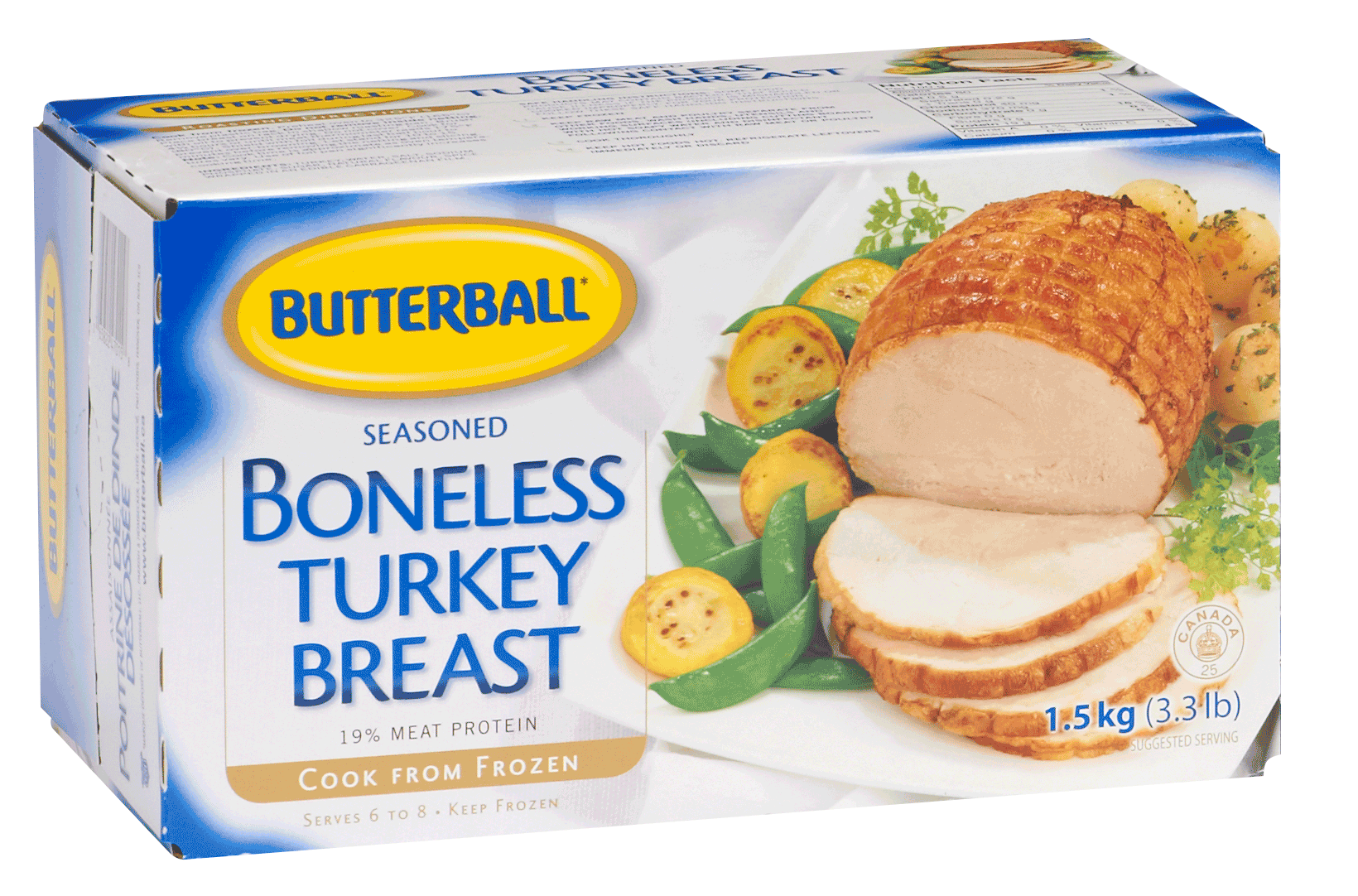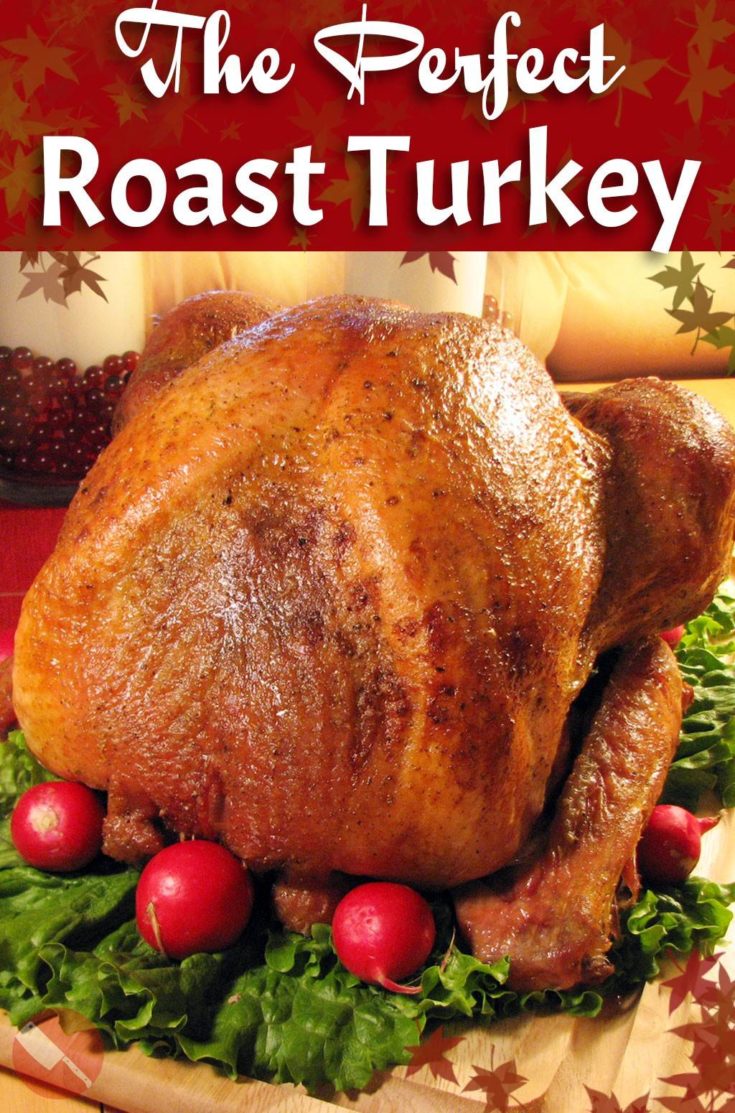Ladies and gentlemen, I proudly present to you the king of the American Holiday table, the centerpiece of nearly every family gathering in the United States for the months of November and December, the prince of poultry, the roast turkey.
The turkey is either the most awaited or most dreaded addition to a holiday meal. Most awaited if the bird is moist, succulent and juicy, and most maligned when dry, overcooked and in desperate need of a slathering of gravy just to make the remains of the once proud bird edible. The latter almost never happens to me, and I’m going to give forth the secret of the perfect roast turkey, which I assure you, this was, and is.
There are thousands of roast turkey, Christmas turkey and Thanksgiving turkey recipes out there, and the methods for achieving the “perfect” bird vary wildly from one recipe to another.
Most call for basting the bird constantly throughout the cooking process. To make the truly prefect roast turkey you must keep the mantra of poultry perfection on your lips.
Cooking a juicy, flavorful turkey breast can seem intimidating, but it doesn’t have to be. With the right techniques, a few simple ingredients, and a bit of patience, you can easily roast a tender and delicious Butterball turkey breast right in your own oven. In this guide, I’ll walk you through everything you need to know to cook the perfect Butterball turkey breast every time.
Choosing and Preparing Your Butterball Turkey Breast
When selecting your turkey breast, opt for a size that will adequately feed your guests without lots of leftovers. For the average family dinner, a 3 to 5 pound turkey breast is ideal. Bone-in breasts tend to have more flavor, while boneless cuts are easier to carve.
If the turkey breast is frozen be sure to thaw it thoroughly in the refrigerator for 24 hours per 4-5 pounds. Pat the breast dry before seasoning it under and on the skin with a simple blend of olive oil melted butter, herbs, garlic, salt, and pepper.
Place the breast on a roasting rack in a pan to promote air circulation as it cooks. Resist the urge to add liquid as roasted turkey should not be steamed.
Determining Cook Time
The cook time can vary greatly depending on the size and bone-in vs boneless cut. Use these cook times as a guide:
-
1-2 pound breast: 45 minutes to 1 hour 15 minutes
-
3-4 pound breast: 1 hour 15 minutes to 1 hour 45 minutes
-
5-6 pound breast: 1 hour 45 minutes to 2 hours 15 minutes
-
Bone-in breasts take about 30 minutes longer
-
Reduce time by 10-15 minutes for boneless
For best results, plan on roasting at 325°F and allowing approximately 15-20 minutes per pound. Monitor the temperature and adjust time accordingly.
Roasting and Basting for Moist, Flavorful Meat
Once your breast is prepped, let the roasting begin! Preheat your oven fully before sliding the pan onto a centered oven rack.
After the first hour, baste the turkey breast with a flavorful mixture of broth, melted butter, herbs, and citrus juice every 30 minutes until it’s finished cooking. This keeps the meat beautifully moist.
About 2/3 through the roasting time, tent the breast loosely with foil to prevent over-browning. Continue roasting until the thickest part of the breast reaches an internal temperature of 165°F-170°F.
Letting It Rest for the Best Results
I can’t stress this enough – let your turkey breast rest before slicing into it! Resting for 15-20 minutes allows the juices to redistribute throughout the meat. Skipping this step means dry turkey.
Once rested, use a sharp knife to carve the breast, slicing against the grain. Serve the juicy turkey breast warm with pan juices drizzled over top.
Handy Roasting Tips
-
For food safety, use an instant-read thermometer to check temperature.
-
If the breast browns too quickly, tent it with foil sooner or reduce the oven temperature by 25 degrees.
-
Baste less frequently toward the end to help crisp up the skin.
-
Add herbs, citrus zest, or chopped garlic to the baste for extra flavor.
-
Let stand 15 minutes before carving to allow juices to settle.
Common Turkey Breast Roasting Problems and Solutions
Even experienced cooks can run into issues when roasting turkey breasts. Here are some common problems and foolproof solutions:
Dry, overcooked meat: The breast was left in the oven too long. Always use a meat thermometer and remove it at 165-170°F.
Uneven cooking: Rotate the pan and baste to promote even browning. Ensure the oven rack is centered.
Soggy skin: Pat turkey dry before cooking, reduce late basting, and blast it under the broiler if needed.
Undercooked: Your oven may run cool. Use an oven thermometer to assess accuracy and adjust temperature or cook time accordingly.
Bland flavor: Really get seasoning under and on the skin. Include bold herbs and citrus in the baste.
Serving Suggestions for Your Perfect Turkey Breast
A beautifully roasted Butterball turkey breast deserves accompaniments as delicious as it is. Here are some serving ideas:
-
Classic Thanksgiving Sides: Mash potatoes, roasted vegetables, stuffing, cranberry sauce
-
Lighter Fare: Fresh green salad, roasted asparagus, quinoa pilaf
-
Simple Sauces: Turkey gravy, pan juices, cranberry chutney
-
Easy Sandwiches: Sliced turkey, mayo, lettuce, tomato, avocado, toasted bread
-
Creative Leftovers: Pot pies, turkey chili, casseroles, turkey tetrazzini
With the right prep, seasonings, and roasting method, you can easily make moist, tender Butterball turkey breasts at home. Master these simple tips for holiday-worthy results every time.
Frequently Asked Questions About Roasting Butterball Turkey Breasts
How long does it take to cook a 3 pound Butterball turkey breast?
Around 1 hour and 15 minutes to 1 hour and 30 minutes at 325°F is typical for a 3 pound bone-in breast. Boneless takes about 15 minutes less.
What temperature should I roast my turkey breast at?
325°F is ideal for evenly cooking turkey breasts of all sizes. Higher heat tends to dry out the meat.
Can I cook a frozen Butterball turkey breast?
It’s best to thaw turkey breast completely in the fridge before cooking. Frozen breasts may cook unevenly.
Should I brine my Butterball turkey breast?
Butterball turkey breasts are pre-brined, so brining again is unnecessary. Simply seasoning the exterior adds plenty of flavor.
How can I tell when my turkey breast is done cooking?
Use an instant-read meat thermometer to check for doneness. The thickest part should reach 165-170°F when fully cooked.
How long does leftover turkey breast last in the fridge?
Cooked turkey breast keeps for 3-4 days tightly wrapped in the refrigerator. Slice and freeze leftovers for longer storage.
With the right techniques and timing for the size of your Butterball turkey breast, you can feel confident roasting tender, juicy turkey at home for any occasion.

Do not stuff the bird. (With stuffing, at least.)
Stuffing the bird increases cooking times while robbing you of the perfect opportunity to add flavor to the bird.
I adore turkey flavored dressing, but if you’ve got a good bird you’ll have ample drippings. I use them to make not only a wonderful dressing, but a good amount of gravy as well.
Of course, flavorings are fine. We use a mix of citrus fruits, onion, and garlic.
Every time you open the oven door, you’re dropping the temperature by at least 50 degrees or so. It takes even the best oven a little while to recover from this. For you this means your turkey takes longer to cook, giving a higher chance of a dried out bird.
Trust your probe thermometer to tell you when the turkey is at the right temperature. Leave the oven closed and let it do what it’s supposed to do.
Wait? You don’t own a probe thermometer? We need to fix that! Either tell Alexa to order you a probe thermometer on Amazon, Or jump over to Amazon to get yourself a good thermometer right now!
The only time the oven door should open is when you’re adding the foil tent from to the bird. And that’s just to get beautiful, crisp, golden-brown skin.

This method is simplicity in itself, a rub, a trip into the oven and just one adjustment that you need to take in the middle, a little patience at the end and viola, a perfect roast turkey every single time! You’ll thank me for this, I promise.

The Ultimate Roast Turkey RecipePrep Time:
The absolute best roast turkey recipe for your Thanksgiving or Christmas table. Perfect every time with no basting and no checking. Just rub it, cook it, and enjoy.
- 1 turkey of appropriate size for your gathering or leftover preferences, with giblets and neck. (The turkey pictured weighed 21 pounds.) Not a Butterball or other treated bird!
- 1 medium onion, halved and quartered
- 1 head garlic, cut in half across the cloves
- 1 lemon, halved and quartered
- 1 orange, halved and quartered
- 1 part curry powder
- 2 parts powdered dry sage
- 4 parts Kosher salt
- 1 part black pepper, freshly ground if possible
- Preheat oven to 400°F. (210°C)
- Combine curry powder, sage, salt and pepper in a medium bowl. Set aside.
- Rinse turkey well and pat dry. Reserve neck, giblets and tail (If like mine, it was cut most of the way off in processing.) Turn wingtips under body of bird and place in roasting pan, breast side up.
- Rub spice mixture over entire surface of bird and in cavities. Place onions, oranges, lemons and garlic in body cavities. Truss legs if desired, arrange any loose skin so that it is tucked under the body of the bird.
- Insert probe thermometer into thickest part of the turkey, where the breast and thigh meet. Be certain probe is not touching bone.
- Place turkey in oven and cook for one hour. Cover loosely with foil and reduce heat to 350°F (180°C). Cook until the internal temperature of the bird reaches 160°F (71°C), remove foil tent and cook 20 minutes longer.
- Remove from oven, transfer to platter or board, reserving all pan drippings, cover with foil and let rest for at least 20 minutes before serving.
If using a Butterball or other turkey that has had the skin pierced, add a Tbsp of flour to a Tbsp. of honey and be sure to seal all the punctures in the skin, or the turkey will be dry!
I firmly believe that a roast turkey should be presented whole at the table. Anything less just seems to take something away from the bird and the work that you’ve put in to it. Place it on a bed of greens (I used curly leafed lettuce) and garnish with fresh fruits or veggies. It’s all the presentation you need.
*Note. the bird may sit at rest indefinitely, even until cooled, without losing any of its juiciness as long as the skin is never pierced. to reheat, simply place in a 225°F (107°C) oven for 30-45 minutes.
